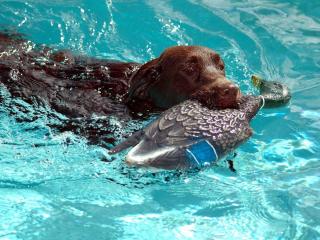

Particularly versatile, loyal, and reliable, the Labrador retriever is one of the most suitable dogs for assistance roles and family life. However, training should start early to compensate for a lack of maturity that often results in overwhelming energy and difficulty channeling it.
Discover more about the Labrador Retriever, a breed with undeniable qualities.
The ancestors of the Labrador, the Newfoundland and Saint John dogs (named after the capital of the island), lived in the province of Newfoundland and Labrador in Canada in the 18th century. These dogs were adept swimmers and they could dive and retrieve fishing nets.
In 1815, a law was passed that any stray dog found on the island would be euthanized. Caught dogs were then instead sold to English fishermen and exported to Europe.

The Labrador Retriever breed was officially recognized in 1917 in the United States.
The Labrador’s head is broad with drooping triangular ears and brown eyes. Its body is powerful and well-rounded with a thick tail at the base and thinner at the end.

Weight: male 64 to 80 pounds (29 to 36 kg), female 50 to 70 pounds (23 to 32 kg).
Coat: short and tight without waves or fringe, with a dense and waterproof undercoat.
Color: black, chocolate, or yellow (light cream to red).
Life expectancy: 12 to 15 years.
 Joyous, playful, and boisterous, the Labrador can be hard to manage in the early months of its life.
Joyous, playful, and boisterous, the Labrador can be hard to manage in the early months of its life. Tireless, particularly in the first years of its life, it’s the perfect companion for all sports activities, especially water sports, as it loves water.
Tireless, particularly in the first years of its life, it’s the perfect companion for all sports activities, especially water sports, as it loves water.Labradors shed impressively throughout the year. Adding salmon oil to their diet helps to strengthen hairs. Daily brushing with a metallic comb stimulates blood circulation, resulting in better fur regrowth.
The Labrador is prone to overeating and tends to be overweight. A genetic mutation (absence of the POMC gene) causes reduced satiety and an organism that functions on a few calories.
$590 to $1310 (500 to 1110 euros).
$94 (80 euros) for food, anti-parasite products, grooming products.
Kibbles enriched with glucosamine and chondroitin help to anticipate the onset of arthritis, which is inevitable in Labradors.